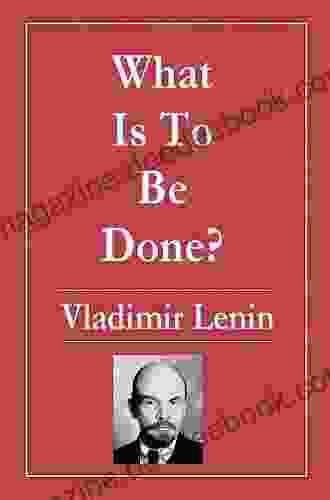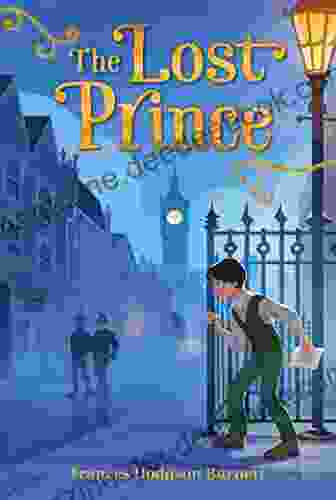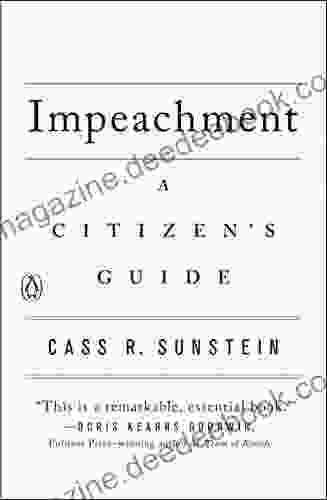What Is to Be Done?: A Profound Examination of Social and Ideological Transformation

Published in 1863, Nikolai Chernyshevsky's "What Is to Be Done?" emerged as a monumental work in Russian literature, igniting fervent debates and shaping the trajectory of the country's subsequent revolutionary movement. With its captivating narrative and profoundly influential ideas, the novel left an indelible mark on Russian society, sparking conversations about the pressing issues of the time and inspiring a generation of activists and intellectuals.
4.3 out of 5
| Language | : | English |
| File size | : | 1110 KB |
| Text-to-Speech | : | Enabled |
| Screen Reader | : | Supported |
| Enhanced typesetting | : | Enabled |
| Word Wise | : | Enabled |
| Print length | : | 463 pages |
Historical Context and Literary Roots
Set against the backdrop of a rapidly industrializing Russia and the oppressive reign of Tsar Alexander II, "What Is to Be Done?" reflected the burgeoning social and political tensions of the era. Chernyshevsky, a leading figure in the radical intelligentsia, sought to explore the paths towards revolutionary change and to envision a more just and equitable society.
The novel's literary roots can be traced to the utopian works of predecessors like Charles Fourier and Thomas More, envisioning a perfect society free from exploitation and oppression. However, Chernyshevsky's novel departs from these predecessors by emphasizing the role of revolutionary action and the formation of a "New Man" as the agents of social transformation.
Themes and Characters
"What Is to Be Done?" revolves around the lives of several characters, each embodying different aspects of Chernyshevsky's ideological vision. Vera Pavlovna, the protagonist, represents the emancipation of women and their pivotal role in the revolutionary movement. Her unwavering resolve and belief in a better future inspire those around her.
Dimitry Lopukhov and Alexander Kirsanov, Vera's male counterparts, embody the idealized "New Man." They are intellectuals and revolutionaries who dedicate their lives to fighting against injustice and creating a more harmonious society. Their unwavering commitment and self-sacrifice serve as a beacon of hope and inspiration for others.
The novel explores themes of love, marriage, education, and the role of science in social transformation. Chernyshevsky's radical ideas on these subjects sparked controversy, challenging the prevailing social norms and advocating for a more enlightened and progressive society.
Influence on Russian Society and Revolutionary Movement
The publication of "What Is to Be Done?" sent shockwaves through Russian society. The novel's bold ideas ignited heated debates and polarized opinions. Many young intellectuals and revolutionaries embraced the novel as a guiding light, inspiring their own struggles for a more just and equitable society.
Chernyshevsky's novel profoundly influenced the development of the Russian revolutionary movement. It became a testament to the power of literature as a catalyst for social change, inspiring generations of activists and intellectuals to strive for a better future.
Literary Significance and Legacy
Beyond its historical impact, "What Is to Be Done?" holds immense significance as a literary work. Its captivating storytelling, well-developed characters, and thought-provoking ideas have ensured its enduring appeal. The novel has been translated into numerous languages and continues to be read and analyzed by scholars, students, and general readers alike.
Chernyshevsky's novel stands as a testament to the enduring power of literature to challenge social norms, ignite change, and inspire generations to come. Through its unflinching examination of social and ideological transformation, "What Is to Be Done?" remains a vital and relevant work of art that continues to resonate with readers today.
"What Is to Be Done?" by Nikolai Chernyshevsky is a seminal work that profoundly influenced Russian literature, society, and the course of history. Its themes of social justice, the emancipation of women, and revolutionary transformation continue to inspire and provoke debate, making it a timeless and relevant masterpiece of Russian literature.
4.3 out of 5
| Language | : | English |
| File size | : | 1110 KB |
| Text-to-Speech | : | Enabled |
| Screen Reader | : | Supported |
| Enhanced typesetting | : | Enabled |
| Word Wise | : | Enabled |
| Print length | : | 463 pages |
Do you want to contribute by writing guest posts on this blog?
Please contact us and send us a resume of previous articles that you have written.
 Book
Book Novel
Novel Chapter
Chapter Text
Text Genre
Genre Reader
Reader Paperback
Paperback Magazine
Magazine Newspaper
Newspaper Sentence
Sentence Bookmark
Bookmark Foreword
Foreword Preface
Preface Synopsis
Synopsis Annotation
Annotation Manuscript
Manuscript Classics
Classics Library card
Library card Memoir
Memoir Encyclopedia
Encyclopedia Thesaurus
Thesaurus Character
Character Resolution
Resolution Librarian
Librarian Borrowing
Borrowing Stacks
Stacks Periodicals
Periodicals Study
Study Research
Research Lending
Lending Journals
Journals Reading Room
Reading Room Rare Books
Rare Books Interlibrary
Interlibrary Literacy
Literacy Study Group
Study Group Thesis
Thesis Storytelling
Storytelling Theory
Theory Textbooks
Textbooks Rick Gavin
Rick Gavin Frances Hodgson Burnett
Frances Hodgson Burnett Mark Grabowski
Mark Grabowski Richard Zelade
Richard Zelade Patrick Fisher
Patrick Fisher Steve Eng
Steve Eng Tom Jones
Tom Jones Ernest Hemingway
Ernest Hemingway Rg Richardson
Rg Richardson Robert M Rennick
Robert M Rennick Fletcher Mckenzie
Fletcher Mckenzie Hafiz
Hafiz Robin R Murphy
Robin R Murphy Atsons
Atsons Lian Tanner
Lian Tanner Cass R Sunstein
Cass R Sunstein Sara Mills
Sara Mills Matheus Hobold Sovernigo
Matheus Hobold Sovernigo J Tracy Power
J Tracy Power Vickie Howell
Vickie Howell
Light bulbAdvertise smarter! Our strategic ad space ensures maximum exposure. Reserve your spot today!
 Adam HayesFollow ·6.1k
Adam HayesFollow ·6.1k Zachary CoxFollow ·4k
Zachary CoxFollow ·4k Guillermo BlairFollow ·18.7k
Guillermo BlairFollow ·18.7k Jerry WardFollow ·17.2k
Jerry WardFollow ·17.2k Devon MitchellFollow ·5.2k
Devon MitchellFollow ·5.2k Brady MitchellFollow ·17.1k
Brady MitchellFollow ·17.1k Chinua AchebeFollow ·8.1k
Chinua AchebeFollow ·8.1k Corbin PowellFollow ·19.6k
Corbin PowellFollow ·19.6k

 Thomas Hardy
Thomas HardyA Comprehensive Study Guide for Jules Verne's Journey to...
Embark on an...

 Hugo Cox
Hugo CoxPacific Steam Navigation Company Fleet List History: A...
Prologue: A Maritime Legacy...

 William Wordsworth
William WordsworthThe Practice of Generalist Social Work: Embracing a...
The field of social work encompasses a...

 Damon Hayes
Damon HayesPractical Biometrics: From Aspiration to Implementation
What is Biometrics? ...

 Nikolai Gogol
Nikolai GogolDust of the Zulu Ngoma Aesthetics After Apartheid:...
The rhythmic beat of the Ngoma drum...
4.3 out of 5
| Language | : | English |
| File size | : | 1110 KB |
| Text-to-Speech | : | Enabled |
| Screen Reader | : | Supported |
| Enhanced typesetting | : | Enabled |
| Word Wise | : | Enabled |
| Print length | : | 463 pages |













